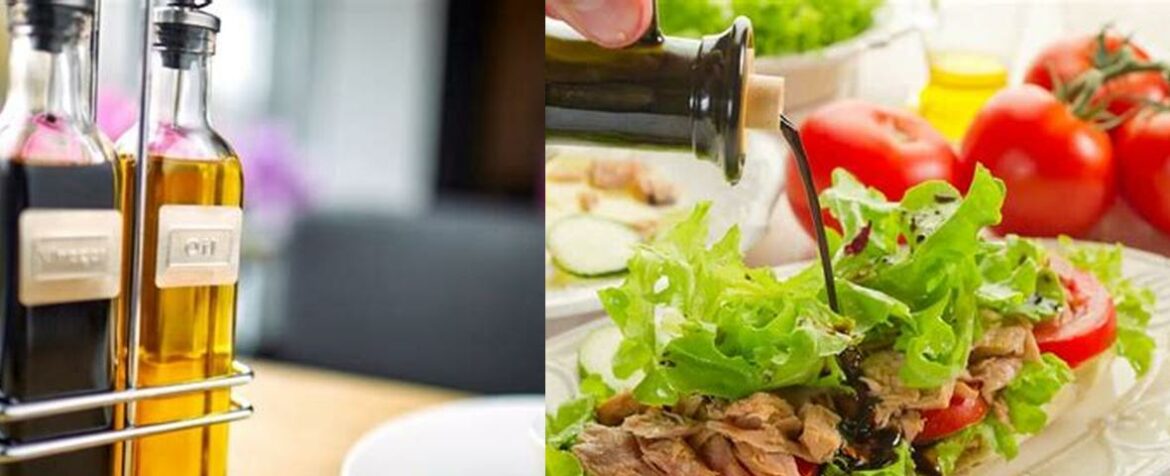Balsamic vinegar vs vinaigrette: Balsamic Vinegar vs. Vinaigrette: Unveiling the Nuances of Taste and Versatility
Are you a salad lover who can’t resist a drizzle of tangy goodness? Then you’ve probably come across the eternal debate of balsamic vinegar vs. vinaigrette. These two culinary companions may seem similar at first glance, but trust me, there’s a world of difference waiting to be explored!
In this blog post, we’ll delve into the fascinating realm of balsamic vinegar and vinaigrette, unraveling the secrets behind their distinct flavors and remarkable versatility. Whether you’re a seasoned foodie or simply looking to elevate your salad game, get ready for a taste bud adventure like no other.
So, grab your forks and join me as we embark on a flavorful journey that will leave you craving for more. Let’s settle the balsamic vinegar vs. vinaigrette debate once and for all – because life is too short for bland salads!
Balsamic Vinegar vs. Vinaigrette: Unveiling the Nuances of Taste and Versatility
In the realm of culinary arts, two condiments reign supreme: balsamic vinegar and balsamic vinaigrette. Both derived from the essence of grapes, these culinary marvels offer distinct flavor profiles and versatile applications, tantalizing taste buds and elevating dishes to new heights of gustatory delight. Embark on a culinary journey as we delve into the captivating world of balsamic vinegar and vinaigrette, unraveling their unique characteristics, similarities, and contrasting culinary roles.
Balsamic Vinegar: A Symphony of Sweet and Sour
Balsamic vinegar, a product of Modena, Italy, is a revered condiment crafted from concentrated grape juice, meticulously aged in wooden barrels for a minimum of 12 years. This aging process bestows upon balsamic vinegar its characteristic dark, syrupy consistency, complex flavor profile, and distinctive aroma. The aging process also imparts a delightful balance of sweetness and acidity, with hints of caramel, dried fruit, and a touch of woodsy notes.
Balsamic vinegar’s versatility extends beyond its role as a salad dressing. Its robust flavor profile makes it an ideal companion for marinades, glazes, and reductions, adding depth and richness to meats, vegetables, and desserts alike. A drizzle of balsamic vinegar can transform grilled steaks, roasted chicken, or fresh fruit into culinary masterpieces.
Balsamic Vinaigrette: A Culinary Harmony of Flavors
Balsamic vinaigrette, a harmonious blend of flavors, is a delightful combination of balsamic vinegar, olive oil, Dijon mustard, salt, and pepper. The addition of these ingredients creates a complex and balanced dressing that complements a wide array of salads, grilled vegetables, and even meat dishes.
The tangy acidity of balsamic vinegar is mellowed by the richness of olive oil, while Dijon mustard adds a touch of piquant spice. Salt and pepper provide a foundation of savory flavor, enhancing the overall taste experience. Balsamic vinaigrette strikes a perfect balance between sweet, sour, and savory, making it a versatile dressing that can elevate any dish.
Similarities and Differences: A Tale of Two Condiments
Balsamic vinegar and balsamic vinaigrette share a common heritage, both originating from the concentrated essence of grapes. They also find common ground as dressings, adding a burst of flavor to salads and vegetables. However, their differences lie in their composition and culinary applications.
Balsamic vinegar, in its pure form, is an undiluted condiment, offering a more intense and concentrated flavor profile. Its versatility extends beyond salad dressings, making it a valuable ingredient in sauces, glazes, and reductions.
Balsamic vinaigrette, on the other hand, is a combination of several ingredients, each contributing to its unique flavor profile. The addition of olive oil, Dijon mustard, salt, and pepper creates a more complex and balanced dressing, ideal for salads and grilled dishes.
Crafting Balsamic Vinaigrette: A Culinary Symphony
Creating balsamic vinaigrette is a simple yet rewarding culinary endeavor. Begin by combining balsamic vinegar, olive oil, Dijon mustard, salt, and pepper in a bowl or jar. Whisk vigorously until the ingredients are well blended and emulsified, forming a smooth and cohesive dressing. The proportions of each ingredient can be adjusted to suit personal preferences, allowing for endless variations and flavor combinations.
Conclusion: A Culinary Crossroads
Balsamic vinegar and balsamic vinaigrette, while sharing a common heritage, offer distinct flavor profiles and culinary applications. Balsamic vinegar, with its concentrated sweetness and acidity, shines as a versatile condiment, while balsamic vinaigrette, a harmonious blend of flavors, excels as a salad dressing and marinade.
The choice between these two culinary delights ultimately depends on personal preference and the desired outcome. Whether seeking the intense, complex flavors of balsamic vinegar or the balanced harmony of balsamic vinaigrette, both condiments offer a journey of culinary exploration, transforming ordinary dishes into extraordinary culinary experiences.
FAQ about Balsamic Vinegar Vs Vinaigrette
Q: What is the difference between balsamic vinegar and balsamic vinaigrette?
A: Balsamic vinegar is a concentrated grape juice aged in wooden barrels, while balsamic vinaigrette is a dressing made by combining balsamic vinegar with other ingredients like oil, herbs, and spices.
Q: How long is balsamic vinegar aged for?
A: Balsamic vinegar is aged for a minimum of 12 years, which contributes to its dark, syrupy consistency, complex flavor profile, and distinctive aroma.
Q: What is the origin of balsamic vinegar?
A: Balsamic vinegar originates from Modena, Italy.
Q: What are the characteristics of balsamic vinegar?
A: Balsamic vinegar has a sweet and sour taste, a dark, syrupy consistency, and a complex flavor profile.
Q: How is balsamic vinaigrette made?
A: Balsamic vinaigrette is made by combining balsamic vinegar with other ingredients like oil, herbs, and spices to create a flavorful dressing.
Q: What are the culinary roles of balsamic vinegar and balsamic vinaigrette?
A: Balsamic vinegar can be used as a condiment or drizzled over dishes to enhance their flavor, while balsamic vinaigrette is commonly used as a salad dressing or marinade.


